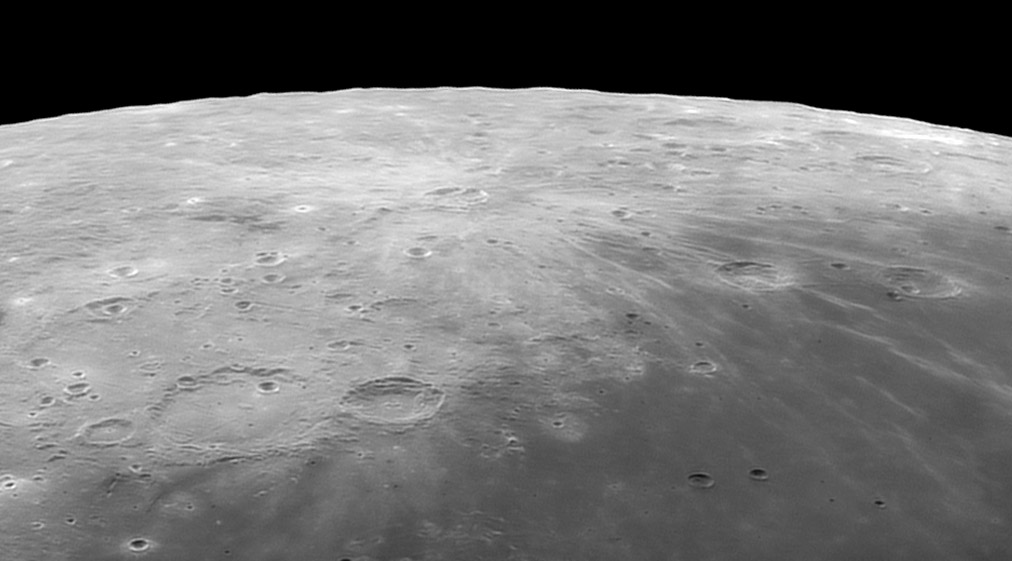Difference between revisions of "August 20, 2010"
| Line 3: | Line 3: | ||
<!-- ws:start:WikiTextHeadingRule:1:<h1> --> | <!-- ws:start:WikiTextHeadingRule:1:<h1> --> | ||
<!-- ws:start:WikiTextLocalImageRule:14:<img src="/file/view/LPOD-Aug20-10.jpg/157422883/LPOD-Aug20-10.jpg" alt="" title="" /> -->[[File:LPOD-Aug20-10.jpg|LPOD-Aug20-10.jpg]]<!-- ws:end:WikiTextLocalImageRule:14 --><br /> | <!-- ws:start:WikiTextLocalImageRule:14:<img src="/file/view/LPOD-Aug20-10.jpg/157422883/LPOD-Aug20-10.jpg" alt="" title="" /> -->[[File:LPOD-Aug20-10.jpg|LPOD-Aug20-10.jpg]]<!-- ws:end:WikiTextLocalImageRule:14 --><br /> | ||
| − | <em>roughly west up image by [mailto:astronominsk@mail.ru | + | <em>roughly west up image by [mailto:astronominsk@mail.ru Yuri Goryachko, Mikhail Abgarian, Konstantin Morozov], Minsk, Belarus</em><br /> |
<br /> | <br /> | ||
| − | A bright ray crater near the limb. Can you identify it without Rükl? I used to know it as Olbers A, but since 1993 it has been Glushko. With this lighting it seems like there may be one or more craters on top of it, but vertical spacecraft [http://the-moon.wikispaces.com/Glushko views] reveal that it is another oblique impact with notches in its rim. Its rays are [http://www.mapaplanet.org/explorer-bin/explorer.cgi?map=Moon&layers=moon_clementine_multi&info=NO&advoption=YES&lines=337&samples=397&sizeSelector=resolution&Resolution=32&R=5&G=3&B=1&projection=SIMP&grid=none&stretch=auto&resamp_method=nearest_neighbor&north=14.5&west=270.61&east=295&south=0&center=282.81&defaultcenter=on&center_lat=0 | + | A bright ray crater near the limb. Can you identify it without Rükl? I used to know it as Olbers A, but since 1993 it has been Glushko. With this lighting it seems like there may be one or more craters on top of it, but vertical spacecraft [http://the-moon.wikispaces.com/Glushko views] reveal that it is another oblique impact with notches in its rim. Its rays are [http://www.mapaplanet.org/explorer-bin/explorer.cgi?map=Moon&layers=moon_clementine_multi&info=NO&advoption=YES&lines=337&samples=397&sizeSelector=resolution&Resolution=32&R=5&G=3&B=1&projection=SIMP&grid=none&stretch=auto&resamp_method=nearest_neighbor&north=14.5&west=270.61&east=295&south=0&center=282.81&defaultcenter=on&center_lat=0 not splayed] equally in all directions, and few come southeastward to Hevelius and Cavalerius near bottom left. South (left) of Glushko is a cheerio crater - cheerio for the American [http://www.google.com/images?client=safari&rls=en&q=cheerios&oe=UTF-8&um=1&ie=UTF-8&source=og&sa=N&hl=en&tab=wi&biw=1227&bih=668 cereal], rather than the British greeting. I refer to the sharp-edged, bright nimbus ring around a small, dark-interior crater. Another, less well-defined, is a little further south. The bright craters provide contrast to the nearby small dark patches of mare lava on the northern floor of Hedin. <br /> |
<br /> | <br /> | ||
| − | <em>[mailto:tychocrater@yahoo.com | + | <em>[mailto:tychocrater@yahoo.com Chuck Wood]</em><br /> |
<br /> | <br /> | ||
<strong>Technical Details</strong><br /> | <strong>Technical Details</strong><br /> | ||
| Line 14: | Line 14: | ||
<strong>Related Links</strong><br /> | <strong>Related Links</strong><br /> | ||
Rükl plate [http://the-moon.wikispaces.com/R%C3%BCkl+28 28]<br /> | Rükl plate [http://the-moon.wikispaces.com/R%C3%BCkl+28 28]<br /> | ||
| − | The Minsk Miracle Imagers' original [http://objectstyle.org/astronominsk/Moon/Moon2010/Moon_20100607.htm | + | The Minsk Miracle Imagers' original [http://objectstyle.org/astronominsk/Moon/Moon2010/Moon_20100607.htm mosaic] that this images was cut from.<br /> |
<br /> | <br /> | ||
<hr /> | <hr /> | ||
| − | <div>Click the <strong>Discussion</strong> tab above. ---- The rotating globe shows locations of folks who visit LPOD. The most recent visits include location names - so you can see who else is on when you visit. For example, if you see "Wheeling/ West Virginia" I am probably editing an LPOD. After a few minutes just a small red dot appears. ---- You can support LPOD when you buy any book from Amazon thru [http://www.lpod.org/?page_id=591 | + | <div>Click the <strong>Discussion</strong> tab above. ---- The rotating globe shows locations of folks who visit LPOD. The most recent visits include location names - so you can see who else is on when you visit. For example, if you see "Wheeling/ West Virginia" I am probably editing an LPOD. After a few minutes just a small red dot appears. ---- You can support LPOD when you buy any book from Amazon thru [http://www.lpod.org/?page_id=591 LPOD!]<br /> |
</div> | </div> | ||
---- | ---- | ||
===COMMENTS?=== | ===COMMENTS?=== | ||
| − | + | Register, and click on the <b>Discussion</b> tab at the top of the page. | |
Revision as of 17:23, 11 January 2015
No Longer A

roughly west up image by Yuri Goryachko, Mikhail Abgarian, Konstantin Morozov, Minsk, Belarus
A bright ray crater near the limb. Can you identify it without Rükl? I used to know it as Olbers A, but since 1993 it has been Glushko. With this lighting it seems like there may be one or more craters on top of it, but vertical spacecraft views reveal that it is another oblique impact with notches in its rim. Its rays are not splayed equally in all directions, and few come southeastward to Hevelius and Cavalerius near bottom left. South (left) of Glushko is a cheerio crater - cheerio for the American cereal, rather than the British greeting. I refer to the sharp-edged, bright nimbus ring around a small, dark-interior crater. Another, less well-defined, is a little further south. The bright craters provide contrast to the nearby small dark patches of mare lava on the northern floor of Hedin.
Chuck Wood
Technical Details
June 7, 2010, 01:55-02:34UT. Maksutov-Cassegrain Santel D=230mm F=3000mm, Unibrain Fire-i 702 CCD b/w camera (IEEE-1394, 1388x1040), Filter: Baader IR-pass 685 nm+, Processing in Avistack. Deconvolution in Astra Image.
Related Links
Rükl plate 28
The Minsk Miracle Imagers' original mosaic that this images was cut from.
COMMENTS?
Register, and click on the Discussion tab at the top of the page.



